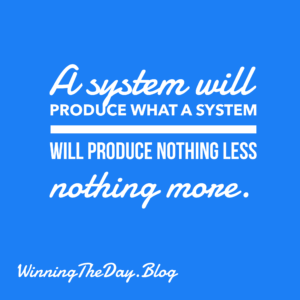Ever feel like life just happens to you? Like you’re constantly dodging curveballs or just reacting to whatever the world throws your way? I get it. And honestly, sometimes the whole “create your own reality” thing can sound a bit… out there. Maybe even like it’s blaming people for tough times, which nobody asks for.
But I stumbled upon this fascinating article on Psychology Today (“How Your Thinking Creates Your Reality“), and it really clicked for me in a practical, non-woo-woo way. It explained how, according to cognitive science, we actually do have a massive hand in shaping our day-to-day experience. Not by magic, but by the way our brains work. Denying this, the author argues, is actually denying our own power.
So, What’s the Deal? Control vs. No Control
The article breaks it down really simply. Think of life having three buckets:
- Stuff You Absolutely Control: This is the game-changer bucket. It contains your thoughts, how you choose to interpret things, your feelings that follow, and your actions. Nobody else can climb inside your head and pick these for you.
- Stuff You Can Influence: Think about interacting with others. You can smile or scowl, and it influences how they might react, but you don’t ultimately control their response. They decide that.
- Stuff You Have Zero Control Over: This is all the random, external stuff – the family we’re born into, illnesses, accidents, layoffs, pandemics, traffic jams… you get the idea. Life happens.
The magic (or rather, the science) happens in that first bucket – the Control bucket.
How Your Brain Builds Your World
Here’s the process that blew my mind:
- Event Happens: Something occurs (e.g., your boss gives you critical feedback).
- You Think About It: Your immediate interpretation kicks in (“I’m failing at my job!” or “Okay, useful feedback to help me improve.”)
- Feelings Follow: That thought directly sparks an emotion (discouragement/depression or determination/motivation).
- Actions Result: You then act based on those feelings (procrastinate and avoid the boss or make a plan to address the feedback).
See how the thought was the pivot point?
Now, it gets deeper. If you think the same kinds of thoughts over and over (“I’m not good enough,” “Things never work out”), they harden into Beliefs.
And here’s the wild part: these Beliefs create a mental filter. Your brain literally starts looking for evidence out in the world that matches your beliefs and screens out stuff that doesn’t fit. The article calls it “priming.”
Think about getting a new car – suddenly you see that model everywhere, right? Same idea. If you believe “I’m unlikeable,” you’ll zoom in on the one person at the party who seemed distant and totally miss the five people who were genuinely happy to chat with you. That “evidence” then reinforces the original belief! Vicious cycle?
This filter shapes your Self-Concept – those core “I am…” (smart, awkward, capable, unlucky) and “I can…” (succeed, never find love, handle this) statements you tell yourself. These form the story you live by.
And because you expect your story to be true, you often act in ways that make it come true – the classic Self-Fulfilling Prophecy. If you go into a date expecting rejection because you believe you’re awkward, you might act nervously, fidget, and clam up… increasing the chances of, well, rejection.
Okay, So How Do We Use This? (Action Time!)
Realizing this isn’t about blame; it’s about empowerment! It means we can become active drivers instead of passive passengers. It won’t change what happens externally, but it can change everything about our experience. Based on the article, here’s what I’m trying to put into practice:
- Know Your Buckets: When stressed, pause and ask: Is this something I control, influence, or have no control over? Focus energy on Bucket #1 (your thoughts/actions).
- Listen to Your Thoughts: Start noticing those automatic interpretations. Are they really the only way to see things?
- Challenge the Narrative: Just because a thought pops up doesn’t make it True (with a capital T). Ask: Is this thought helpful? Is it 100% accurate? Can I choose a different perspective?
- Uncover Your Beliefs: What core assumptions are running the show behind the scenes? Especially the negative “I am…” ones.
- Be a Detective for the Good: Actively look for proof that contradicts your limiting beliefs. Did someone give you a compliment? Did you handle something well? Don’t brush it off – let it sink in!
- Rewrite Your Story: Consciously craft more empowering “I am…” and “I can…” statements. You’re the author here!
- Act “As If”: Behave in line with the positive outcomes you want and the capable person you are (or want to become), even if it feels weird at first. Confidence can be built through action.
- Cultivate Awareness: Just noticing this whole process is the biggest step. Awareness = Choice.
Wrapping Up
Life’s guaranteed to throw curveballs. That’s Bucket #3 reality. But realizing how much power we have in Bucket #1 – our thinking, our perspective, our response – is a total game-changer. It’s not about pretending bad things aren’t bad. It’s about choosing whether to see opportunity or only disadvantage, and deciding how we move forward.
As Henry Ford famously said (and the article quoted), “Whether you think you can or think you can’t, you’re right.”
Have you noticed how your own thinking patterns shape your experiences?
Inspired by the article “How Your Thinking Creates Your Reality” by T. Martinez, Psy.D. on Psychology Today





